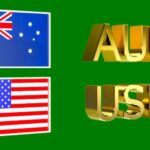Gold (XAUUSD) staged a modest rebound during the Asian session on Tuesday, moving slightly higher from the two-week lows seen on Monday. Dip-buyers offered support as traders remained positioned for a September interest rate cut by the Federal Reserve. However, the rebound lacked conviction, with stronger US Dollar momentum and easing geopolitical risks capping further upside.
The precious metal is caught between two competing forces: expectations of Fed policy easing that support non-yielding assets like gold, and fading safe-haven demand as geopolitical risks show signs of easing. This tug-of-war is keeping prices range-bound for now.
Fed expectations keep gold supported
Traders continue to expect the Fed to resume its rate-cut cycle in September. According to CME FedWatch data, markets are pricing in nearly an 85% chance of a 25 bps cut next month, with expectations for two additional cuts by year-end.
This outlook has limited the US Dollar’s upside and provided a cushion for gold. Lower interest rates reduce the opportunity cost of holding non-yielding assets, making gold more attractive.
However, reduced odds of a jumbo 50 bps cut following stronger US inflation data mean gold lacks the aggressive bullish momentum it had earlier this month.
Inflation pressures temper dovish bets
Last week’s US Producer Price Index (PPI) data showed the fastest monthly increase since 2022, signaling renewed inflation pressures. Additionally, the University of Michigan survey revealed higher consumer inflation expectations climbing to 4.9% for the one-year outlook and 3.9% for the five-year horizon.
These developments back the Fed’s cautious stance, suggesting policymakers may prefer a slower pace of easing to avoid reigniting inflation. As a result, traders have scaled back expectations for a 50 bps September cut, limiting gold’s upside potential.
Geopolitical easing caps safe-haven flows
On the geopolitical front, Russian President Vladimir Putin has agreed to meet Ukrainian President Volodymyr Zelenskyy for a peace summit. This development has boosted hopes of progress towards resolving the prolonged conflict, dampening safe-haven demand for gold.
While peace is far from guaranteed, even the prospect of negotiations reduces risk aversion and keeps investors from rushing into gold as a protective asset. Unless talks break down or geopolitical tensions flare again, this factor may continue to weigh on bullion prices.
Fiscal backdrop adds another layer
S&P Global Ratings recently affirmed the US sovereign rating at AA+/A-1+ with a stable outlook, citing high but steady fiscal deficits. The agency noted that US net general government debt is expected to approach 100% of GDP due to rising interest costs and aging-related expenditures.
Although the rating outlook is stable, concerns over long-term fiscal sustainability provide an underlying support for gold. Investors often view fiscal stress as a bullish driver for safe-haven assets.
Key events ahead: Fed minutes, Powell, PMI data
Market attention is now turning toward the FOMC Minutes release on Wednesday and Fed Chair Jerome Powell’s speech at the Jackson Hole Symposium later this week. Both events are likely to provide fresh clarity on the Fed’s policy path, which will be crucial for gold traders.
Additionally, global flash PMI data on Thursday could shed light on economic momentum and influence demand for safe-haven assets. If growth signals weaken, gold may benefit from renewed risk aversion.
In the near term, Tuesday’s US housing market data Building Permits and Housing Starts is unlikely to be a major market mover for XAUUSD. Instead, traders will focus on Fed commentary and broader risk sentiment for direction.
Technical outlook: Gold stuck in range
Technically, gold remains stuck within a narrow range after failing to attract strong follow-through buying. Immediate support lies around $2,350, near Monday’s two-week low, while stronger support is seen at $2,320. On the upside, resistance is located near $2,385-$2,390, followed by the psychological $2,400 mark.
A sustained break above $2,400 could open the door for further recovery, while a failure to defend $2,350 may expose the $2,320-$2,300 zone.
Conclusion
Gold prices are struggling to gain momentum despite support from Fed rate-cut expectations. Stronger inflation data, easing geopolitical tensions, and a resilient US Dollar continue to weigh on the safe-haven asset. With key Fed events lined up this week, traders are likely to remain cautious before committing to major positions.
Unless the Fed signals a faster pace of cuts or geopolitical risks escalate, gold may continue to trade in a consolidation phase, lacking clear bullish conviction.









